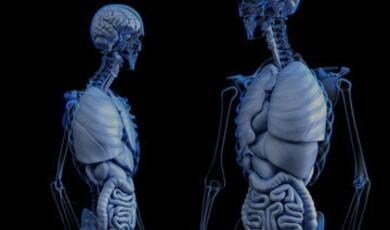Bright Sparks of the Universe
Share
- Details
- Text
- Audio
- Downloads
- Extra Reading
Bryson Gore has made the demonstrations for the Royal Institution Christmas lectures for many years. This talk makes electrons visible, recreating the events that led to their discovery and showing some of the bizarre things that they can do.
Download Text
Bright Sparks of the Universe
Professor Frank Close OBE and Dr Bryson Gore
FC: As a mobile phone interrupts us as we prepare to start, pause for a moment and realize that a century ago that would have been regarded as a miracle. Today there are many things that people don't really think twice about but which are miracles: you flick a switch for instant light, music, moving images, computers, mobile phones. There are miracles at your fingertips, many of which today have been made possible by a single event that happened just over 100 years ago.
It was on 30 April 1897 that J J Thomson marched into the Royal Institution and announced the discovery of the electron. The discoveries and engineering products of the electron are earning for the world about £ 1 million every minute which means that by the end of this talk, on sales tax and VAT alone about 10M has been added to the wealth of governments; more than is spent by them on fundamental science per hour.
But lets go back to 1897 to get a feel for what it was like.
Staff at Cavendish
These are the research staff at the Cavendish 100 years ago. J J Thomson is in the front row - he's the one with a moustache and suit (!) Ernest Rutherford in the bottom right is also in the garb of the day. Times have changed.
In the middle of the 19th century people knew what electricity could do but they didn't know what it consisted of. It was Thomson's discovery that really answered that. Bryson will now show us some of the electrical phenomena that had puzzled them.
BG: Demonstration of electrostatics: PAPER AND CHARGED ROD; the paper dances to the command of the rod as Bryson waves it like a magician's wand. Such properties were know to the savants in ancient times and must have given them much power.
WHIMSHURST MACHINE This was the pinnacle of electrostatic engineering 150 years ago. Its an automated machine for making electricity.
ANIMATED GRAPHICS OF WHIMSHURST There are discs inside and on the glass discs small pieces of metal foil. The forces of attraction and repulsion between electric charges suck electricity from one sphere, down the handle on to the foil on the disc. If the disc is turning it will carry the electricity to the other side where it jumps off and collects on the other sphere. This can produce huge concentrations of charge until the voltage is so large that electricity jumps and produces sparks. It takes about 25000V to make electricity jump 1cm in air.
FC: This is like lightning produced in the lab. We now know that billions of electrons are jumping across there and making the spark. Electricity excited people and inspired them to wonder what it is.
So much for electrostatics; Bryson will now show us an experiment from another area of physics: electromagnetism.
BG: Michael Faraday in the 19th century had discovered that electricity and magnetism were very closely linked. He showed that a magnet could make electricity move, and that electricity, when it moved, could make a magnet. The electrical engineers of the 19th century developed his discovery into motors, dynamos and transformers. One of the greatest engineers of his day, Nicola Tesla, developed this machine.
TESLA COIL
Down at the bottom is a transformer that generates about 10000V This voltage is really only capable of jumping very small gaps, a few millimeters, but by using it to charge up a capacitor we can store lots of electrical energy. Every time the electricity jumps the gap it flows through the outer coil. This movement of electricity - the current - generates a magnetic field which exerts a force on the electrons in the inner coil. By adjusting the number of coils we can generate a very significant spark in air.
That spark isn't a single spark as with the electrostatic generator, but instead is a high frequency spark: there are about 10000 sparks every second.
High freq sparks have a number of properties that are quite different to electrostatics. If I had touched the Whimshurst machine it could have killed me but the high frequency in the Tesla is no problem. I'd like to show you the classic Tesla demonstration with a couple of fluorescent tubes. I hold one near the coil and it lights up. I hold the other one in my other hand and it lights too! The electricity has flowed all round the outside of my body. I can even do a party trick of lighting a bulb in my mouth!
FC: Lets put some science on to the fun. Electricity normally travels in something be it wires gases or even through our bodies. What exactly is carrying the current? It was impossible to "look" inside wires so they had the idea of removing the wires and looking at the sparks. What we have just seen is the electric current hitting atoms of the gas in the tube and shaking light out from them. As vacuum technology improved in the 19th century so they were able to remove more and more gas until there was hardly any impediment to the flow. Colored streamers were seen, similar to what you will have seen with a plasma ball in museums and demonstrations.
There are some specially prepared tubes from the RI that Bryson will show us.
BG: CATHODOLUMINESCENCE Rock samples in the tube give off light when they are hit by the invisible rays. You can tell the current is something flowing as it leaves a shadow of one of the pieces of rock.
This property of rocks to give off colors when hit by electron beams is the principle behind the color TV screen.
GRAPHICS OF THE SHADOW IDEA
FC: THOMSON TUBE Shows replica of Thomson tube; like a miniature TV set in that electric current enters at the back, heats the filament. Electrons (we now know) flow across the tube; magnet and electric plates enable the beam to be steered. These are two phenomena we've been talking about. Thomson cleverly balanced the electric and magnetic forces so the beam hit dead center = no deflection. This might seem a strange idea but if you look at the mathematics of the experiment you find that because electromagnetics is concerned with moving electricity and electrostatics with electricity at rest, when you balance them out you can calculate the mass per unit charge of whatever is moving. Thomson found the mass per unit charge of the carrier was 2000 times lighter than the lightest atom ever measured: hydrogen! Nothing like this had ever been imagined let alone measured.
He got the same result every time whatever the metals or residual gas. So he made the leap and suggested that the carriers of electricity - electrons - are constituents of all atomic elements.
BG: TELEVISION One of the key features of Thomson's tube is that we can build a thin pencil beam of electrons and move them around by using a combination of electrostatic and magnetic fields. Imagine removing all the gas from the tube and then coating the front with a mix of these rock samples in powder form. (BG describes how the spot moves from side to side and up and down; by varying the current we can vary the brightness and build an image. It doesn't take much from there to put very small dots of each of those red green and blue minerals on the tube and we have produced a color TV set.
FC: SEM: Another application emerged in the 1960s that was like applying the idea of the TV in reverse. If you fire an electron beam at an object it will have an effect e.g. give out light perhaps. By scanning the bema over the object we can measure how the scattering varies from place to place. To visualize it, feed the signals into the brightness controls of a TV to produce an image. Its known as a Scanning Electron microscope and it can take us on a voyage into the atom. We have a simple way of changing the scale of magnification: no moving lenses, we just scan our beam of electrons over different sized areas of the object. Bryson will show us one of these in action.
BG: Shows SEM video animation.
FC: So this shows how an electron microscope on a bench top can take us on a voyage into matter. Make a bigger electron microscope and you can even get deep into the atom
SLIDE OF SLAC. This is like Thomson's tube writ large. 3 km in fact. And with this we can look even into the atomic nucleus and the kingdom of the quark. But that's for next time.
This event was on Wed, 02 Oct 2002
Support Gresham
Gresham College has offered an outstanding education to the public free of charge for over 400 years. Today, Gresham College plays an important role in fostering a love of learning and a greater understanding of ourselves and the world around us. Your donation will help to widen our reach and to broaden our audience, allowing more people to benefit from a high-quality education from some of the brightest minds.


 Login
Login







